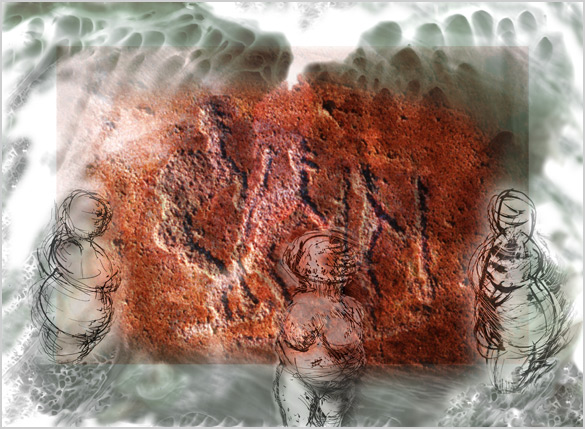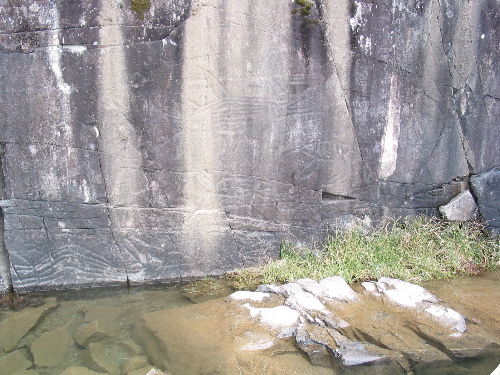Nexus: Vyg & Willendorf

Nexus: Vyg & Willendorf
inkjet print on Hahnemuhle watercolour paper
61 x 80 cm. (24″ x 31.5″)
The three skiers are images of Finno-Ugric rock carvings from the Vyg River, near the White Sea in the Karelia region of northwestern Russia, based on a photograph by Loit Joekalda of Tallinn, Estonia and used with his permission.
The female figures are my drawings of the Paleolithic Venus de Willendorf figure found in Austria, a recurring image in many of my works.
More pictures of Venus can be seen here.
Edited Jan.13, 2013 with larger image.
